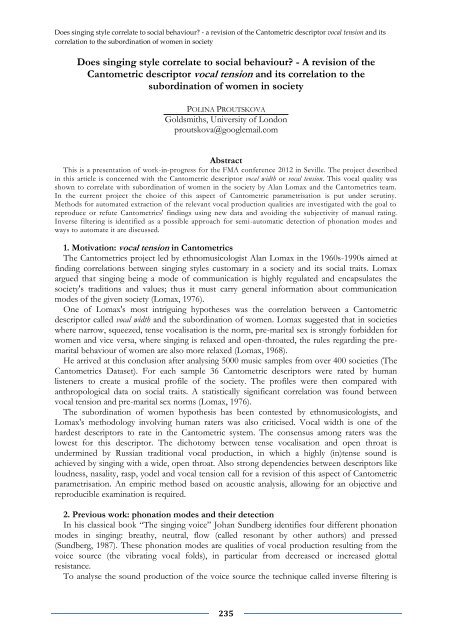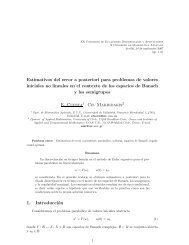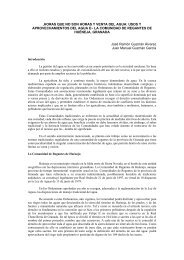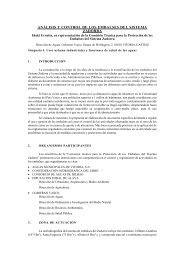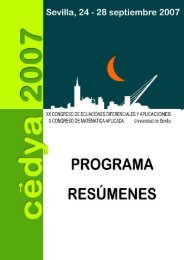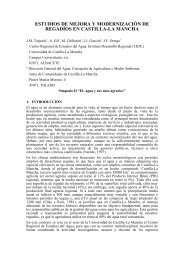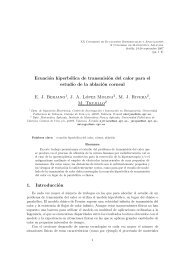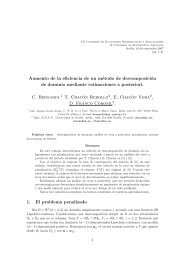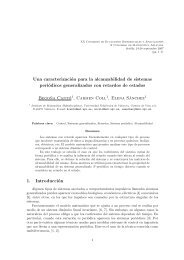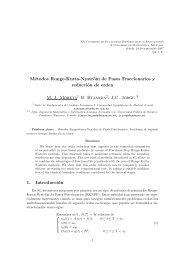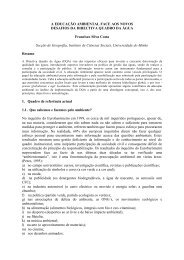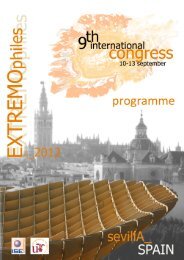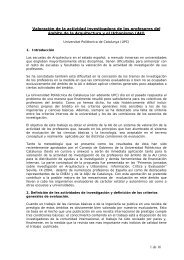LIBRO DE ACTAS (pdf) - Universidad de Sevilla
LIBRO DE ACTAS (pdf) - Universidad de Sevilla
LIBRO DE ACTAS (pdf) - Universidad de Sevilla
You also want an ePaper? Increase the reach of your titles
YUMPU automatically turns print PDFs into web optimized ePapers that Google loves.
Does singing style correlate to social behaviour? - a revision of the Cantometric <strong>de</strong>scriptor vocal tension and its<br />
correlation to the subordination of women in society<br />
Does singing style correlate to social behaviour? - A revision of the<br />
Cantometric <strong>de</strong>scriptor vocal tension and its correlation to the<br />
subordination of women in society<br />
POLINA PROUTSKOVA<br />
Goldsmiths, University of London<br />
proutskova@googlemail.com<br />
Abstract<br />
This is a presentation of work-in-progress for the FMA conference 2012 in Seville. The project <strong>de</strong>scribed<br />
in this article is concerned with the Cantometric <strong>de</strong>scriptor vocal width or vocal tension. This vocal quality was<br />
shown to correlate with subordination of women in the society by Alan Lomax and the Cantometrics team.<br />
In the current project the choice of this aspect of Cantometric parametrisation is put un<strong>de</strong>r scrutiny.<br />
Methods for automated extraction of the relevant vocal production qualities are investigated with the goal to<br />
reproduce or refute Cantometrics' findings using new data and avoiding the subjectivity of manual rating.<br />
Inverse filtering is i<strong>de</strong>ntified as a possible approach for semi-automatic <strong>de</strong>tection of phonation mo<strong>de</strong>s and<br />
ways to automate it are discussed.<br />
1. Motivation: vocal tension in Cantometrics<br />
The Cantometrics project led by ethnomusicologist Alan Lomax in the 1960s-1990s aimed at<br />
finding correlations between singing styles customary in a society and its social traits. Lomax<br />
argued that singing being a mo<strong>de</strong> of communication is highly regulated and encapsulates the<br />
society's traditions and values; thus it must carry general information about communication<br />
mo<strong>de</strong>s of the given society (Lomax, 1976).<br />
One of Lomax's most intriguing hypotheses was the correlation between a Cantometric<br />
<strong>de</strong>scriptor called vocal width and the subordination of women. Lomax suggested that in societies<br />
where narrow, squeezed, tense vocalisation is the norm, pre-marital sex is strongly forbid<strong>de</strong>n for<br />
women and vice versa, where singing is relaxed and open-throated, the rules regarding the premarital<br />
behaviour of women are also more relaxed (Lomax, 1968).<br />
He arrived at this conclusion after analysing 5000 music samples from over 400 societies (The<br />
Cantometrics Dataset). For each sample 36 Cantometric <strong>de</strong>scriptors were rated by human<br />
listeners to create a musical profile of the society. The profiles were then compared with<br />
anthropological data on social traits. A statistically significant correlation was found between<br />
vocal tension and pre-marital sex norms (Lomax, 1976).<br />
The subordination of women hypothesis has been contested by ethnomusicologists, and<br />
Lomax's methodology involving human raters was also criticised. Vocal width is one of the<br />
har<strong>de</strong>st <strong>de</strong>scriptors to rate in the Cantometric system. The consensus among raters was the<br />
lowest for this <strong>de</strong>scriptor. The dichotomy between tense vocalisation and open throat is<br />
un<strong>de</strong>rmined by Russian traditional vocal production, in which a highly (in)tense sound is<br />
achieved by singing with a wi<strong>de</strong>, open throat. Also strong <strong>de</strong>pen<strong>de</strong>ncies between <strong>de</strong>scriptors like<br />
loudness, nasality, rasp, yo<strong>de</strong>l and vocal tension call for a revision of this aspect of Cantometric<br />
parametrisation. An empiric method based on acoustic analysis, allowing for an objective and<br />
reproducible examination is required.<br />
2. Previous work: phonation mo<strong>de</strong>s and their <strong>de</strong>tection<br />
In his classical book “The singing voice” Johan Sundberg i<strong>de</strong>ntifies four different phonation<br />
mo<strong>de</strong>s in singing: breathy, neutral, flow (called resonant by other authors) and pressed<br />
(Sundberg, 1987). These phonation mo<strong>de</strong>s are qualities of vocal production resulting from the<br />
voice source (the vibrating vocal folds), in particular from <strong>de</strong>creased or increased glottal<br />
resistance.<br />
To analyse the sound production of the voice source the technique called inverse filtering is<br />
235


